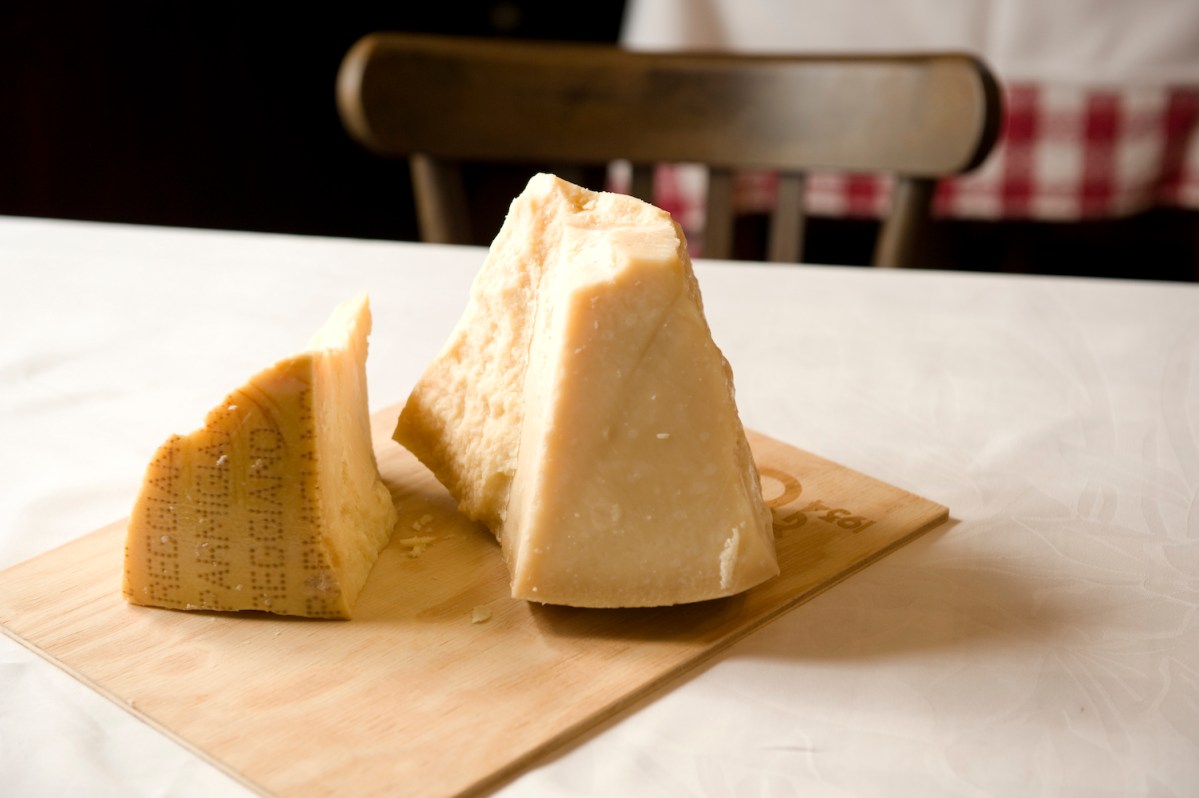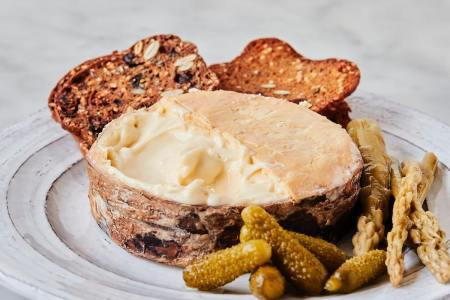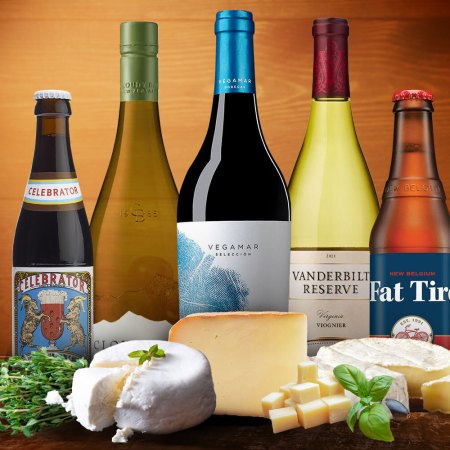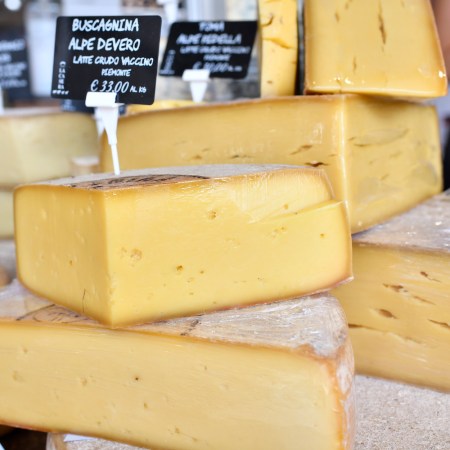You probably already know there’s no comparing the shelf-stable cheese in a green can with the glossy wheel on display at the heart of your local Whole Foods. But when it comes to what many of us know as “Parmesan,” the discrepancies go even further than that. The payoff for knowing the difference? Creamy, fruity bliss.
Parmesan and Parmigiano Reggiano may kind of share a name, but the similarities end there. Parmigiano Reggiano is a PDO-protected product made in just five Italian provinces: Parma, Reggio Emilia, Modena, Bologna and Mantua. It’s strictly regulated down to aging requirements and preclusion of preservatives, which similar cheeses like Grana Padano, for example, allow. Dairy cattle whose milk is destined for greatness graze on locally-grown forage — no silage, fermented feeds or animal flour permitted. And as for ingredients, all you’re allowed is fresh whole milk, sea salt and rennet.
Parmesan, by contrast, can be made anywhere from Holland to Denmark, Argentina to Wisconsin. And unlike with Parmigiano Reggiano, there’s no consortium protecting it. This means that Parmesan can be made with reconstituted dry milk, skim milk or even bleached milk. And yes, those rumors of wood shavings are true: wood pulp is just one of several sources of cellulose used to stretch Parmesan further for a whole lot less money, fat and calories.
“Parmigiano Reggiano is the most copied cheese in the world,” says Giorgio Cravero, a fourth-generation affineur of Parmigiano Reggiano in Bra. “Sometimes when I’m in supermarkets in your country checking the prices, I look at BelGioioso — and wow, it’s very cheap. It’s a hard cheese for grating. It tastes decent. But the problem is that it’s called Parmesan.”
Nicola Bertinelli is the president of the Parmigiano Reggiano Consortium, established in 1934. He agrees that the issue plaguing Parmigiano is one of marketing. “The real problem is that both Parmigiano Reggiano and Parmesan cheeses are found side by side on the shelves in stores and are often confused by shoppers,” he says. “It is up to us at the Parmigiano Reggiano Consortium to do education on the fact that Parmigiano Reggiano is a completely different cheese from Parmesan.”
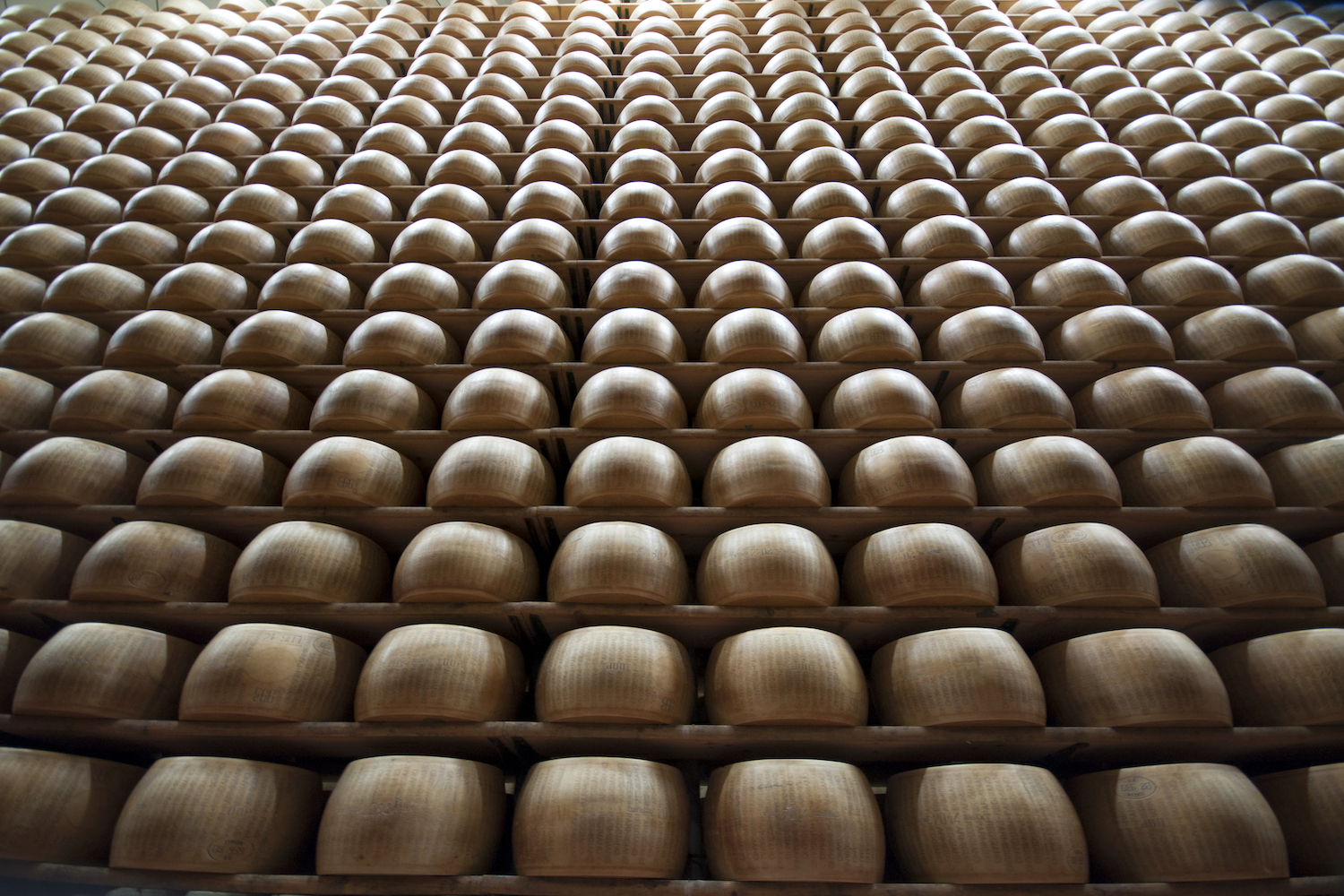
Even if you’ve got your hands on the real thing, however, not all Parmigiano Reggiano is created alike. About four million wheels of Parmigiano Reggiano are made each year by 300 producers throughout the region. And while, according to Cravero, “the majority of companies involved in the Parmigiano business are family businesses,” last year, things changed in a massive way when French multinational Lactalis purchased Ambrosi, one of the biggest players on the Parmesan stage.
“For me, it was a way to reinforce the way to stay small,” he says. And he’s not the only one. Marco Prete and Cristina Fragini are the Italian importers behind bhn Wine & Specialty Provisions, a company that sources and imports only the best Parmigiano Reggiano made from the raw milk of Braunvieh cattle. Gently fermented in wooden molds and aged for 24 months, it boasts a soft, creamy texture that many other Parms lack. And with only 350 units produced, it’s also a rare breed.
“Like so many native Italians, we love food and cooking,” they say. “Once we moved to the U.S., we bought Parmigiano Reggiano from a number of stores but could not find a product that combined the richness, complexity and mildness of flavor of the one we import now.” Their Parmigiano Reggiano certainly stands out, with a mild pungency, slight sweetness and lots of lovely tyrosine crystallization for that trademark crunch.
Cravero’s cheeses are also available Stateside at purveyors like Di Bruno Bros. in Philly, Bedford Cheese in New York and Eataly. They boast a luscious creamy sweetness, which comes not just from his time-tested aging methods but also from his selection of the raw materials. His cheeses begin in Pavullo, Modena instead of Parma or Reggia Emilia. His family has been sourcing their cheeses here for 60 years, ever since his father chanced upon the region Cravero dubs “the promise land.” The rich pastures here, he says, contribute to the creaminess of his cheese, which he buys directly from producers at 12 months old.
Stop Buying French Cheese in the United States and Try These Instead
A French cheese expert shares her picks for the American cheeses (and one British outlier) you should be eating“When the cheeses are young, we need to select the one belonging to our standards,” he says. “We want the best, so we need to select the best.”
He then ages them a further year or more in his natural cellars. The resulting cheese, he says, he’d recognize even blindfolded. “There’s a particular sweetness — and not to be pretentious, but I can tell you that the sweetness of Cravero is pretty rare,” he says. (He’s not wrong. There’s something almost pineapple-y about a Cravero Parm you’d be hard-pressed to find elsewhere.)
When seeking out Parmigiano Reggiano in the United States, first be sure you’ve got the real deal. Look for the PDO seal, which will include the ID number of the dairy, the production month and year, a code identifying the individual wheel and stamps that display the precise length of aging. The presence of these identifiers are a sure sign it has passed muster within the Consortium, which tests each wheel at 12 months of age.
“Each wheel is tapped with a hammer, and the trained ear of the quality inspector recognizes any defects inside the cheese that may compromise quality,” Bertinelli says. “The conforming wheels are marked with the hot-iron brand, thus becoming Parmigiano Reggiano. All identifying marks and signs are removed from any wheels that do not meet the PDO requirements.”
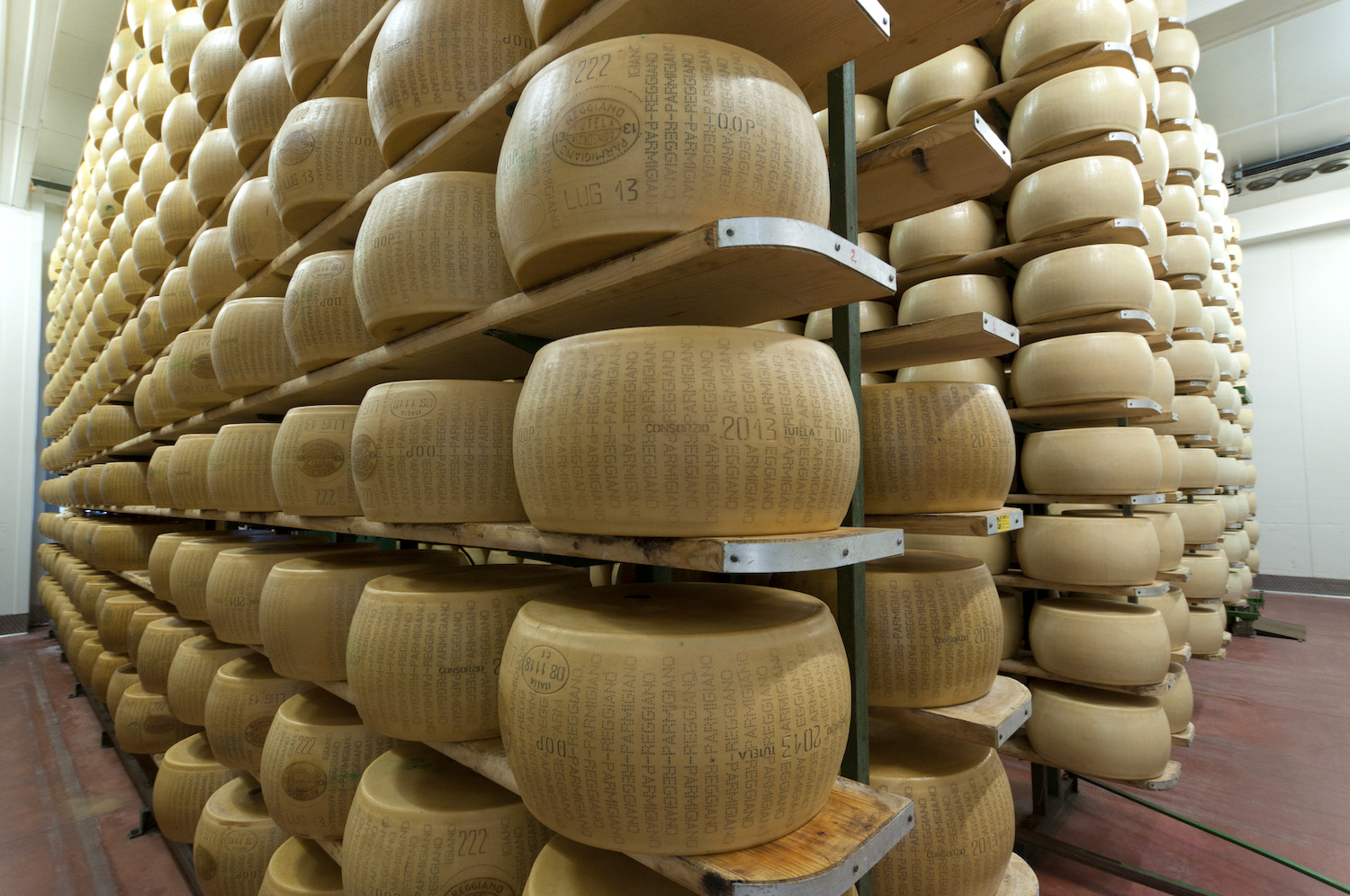
If you’re looking for a specific producer or region, you’re in luck. All Parmigiano Reggiano wheels boast a three-digit numerical code that you can enter into a search engine on the Consortium’s website to track it back to the dairy. But origins aren’t the only thing to bear in mind. Aging is also a factor, but don’t go believing older necessarily means better. Most experts agree that 24 months is the peak of perfection.
“What experts enjoy about the 24-month is that the texture is balanced between large coins of crunchy tyrosine crystals and a pliant paste, making for thinly shaved wafers that melt on your tongue in a burst of flavor,” says Jessica Sennett, a former cheesemaker and monger and the founder of Cheese Grotto. “Thirty-six-month and 48-month Parmigiano Reggiano is also incredible but becomes denser and drier with age. The flavor is even bolder and more condensed, and the texture is more crumbly and, some would argue, less dynamic.”
That said, Bertinelli claims there are times when a younger or older Parm might be to your advantage. A younger Parmigiano Reggiano aged just 12 to 18 months, he says, will have fresh milk and yogurt aromas, making it perfect in salads or cold dishes. At 30 to 36 months, the cheese “is particularly crumbly and grainy,” he says. “The flavor is pronounced with notes of spices, nuts and meat stock. It is an ideal ingredient for filled and baked pastas or to be tasted at the end of meals, paired with fruit and honey.”
All of these benefits only pay off if your Parm is cared for properly, and once it leaves an aging facility like Cravero’s, that’s the job of your monger. Seek out cheesemongers who cut it fresh to order, Sennett says, rather than grabbing one of the pre-cut “rustic wedges” already wrapped in plastic. “A freshly cut piece from the wheel is the best you can possibly get,” she says.
Once you get it home, it’s your job to keep your Parm happy. Luckily, that’s not too difficult. “Because Parmigiano Reggiano is so dense, it can last a very long time in your fridge (we’re talking months and months),” Sennett says. “For the longest shelf-life (one year or more), the cheese can be vacuum-sealed, but it will lose flavor and texture in its surface area because of prolonged contact with plastic. So when reopened, the surface will need to be scraped.”
As for how to enjoy it, grating it over pasta is obviously an option — and one of the most popular. But this is far from the only way, especially if you’ve sourced such a special wedge. Use a Parmigiano Reggiano knife to cut off chunks, and enjoy it as an aperitivo or a dessert, paired with bubbles, fruit or balsamic vinegar to reap the benefits of a totally different Parmigiano Reggiano experience.
Every Thursday, our resident experts see to it that you’re up to date on the latest from the world of drinks. Trend reports, bottle reviews, cocktail recipes and more. Sign up for THE SPILL now.
